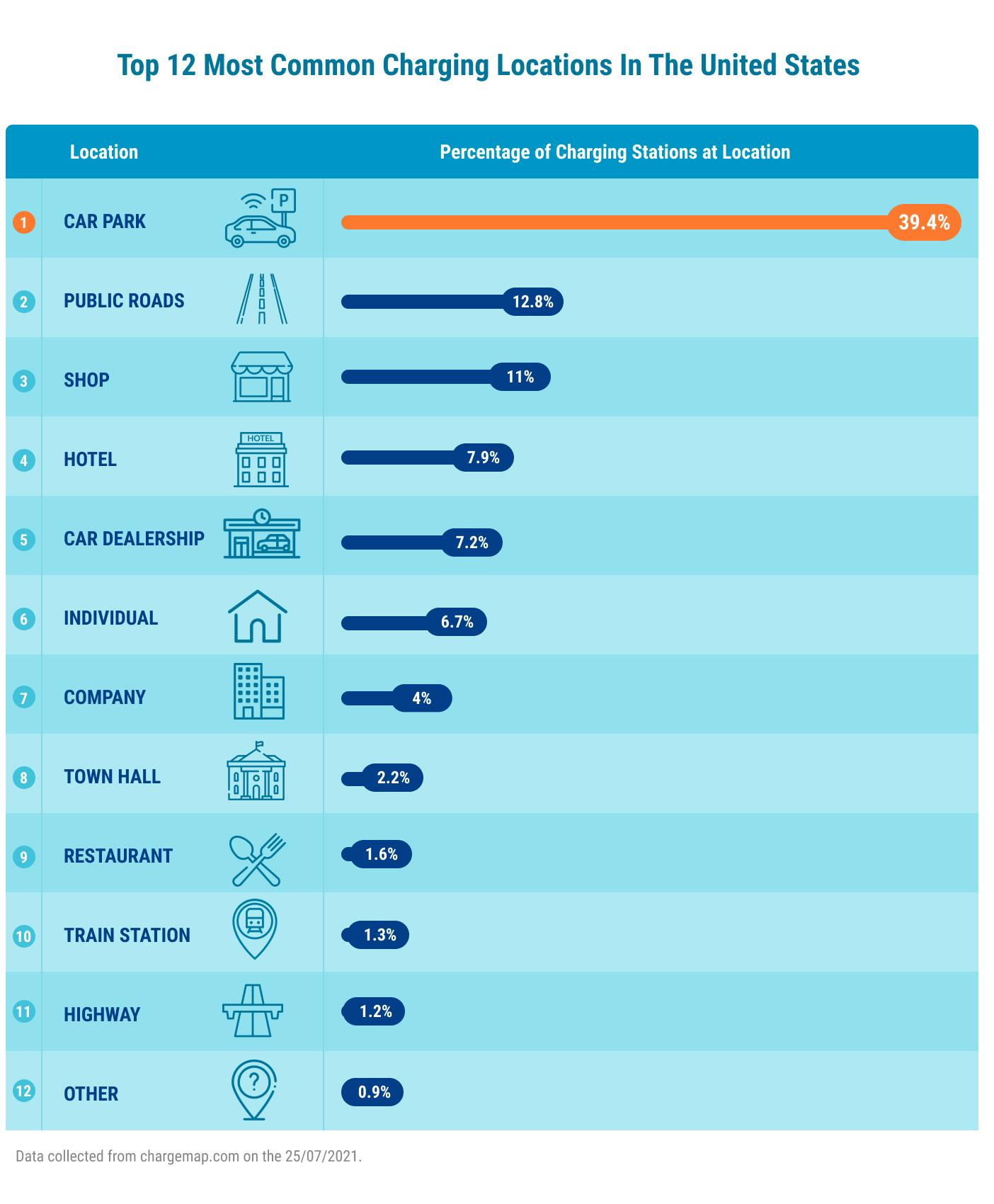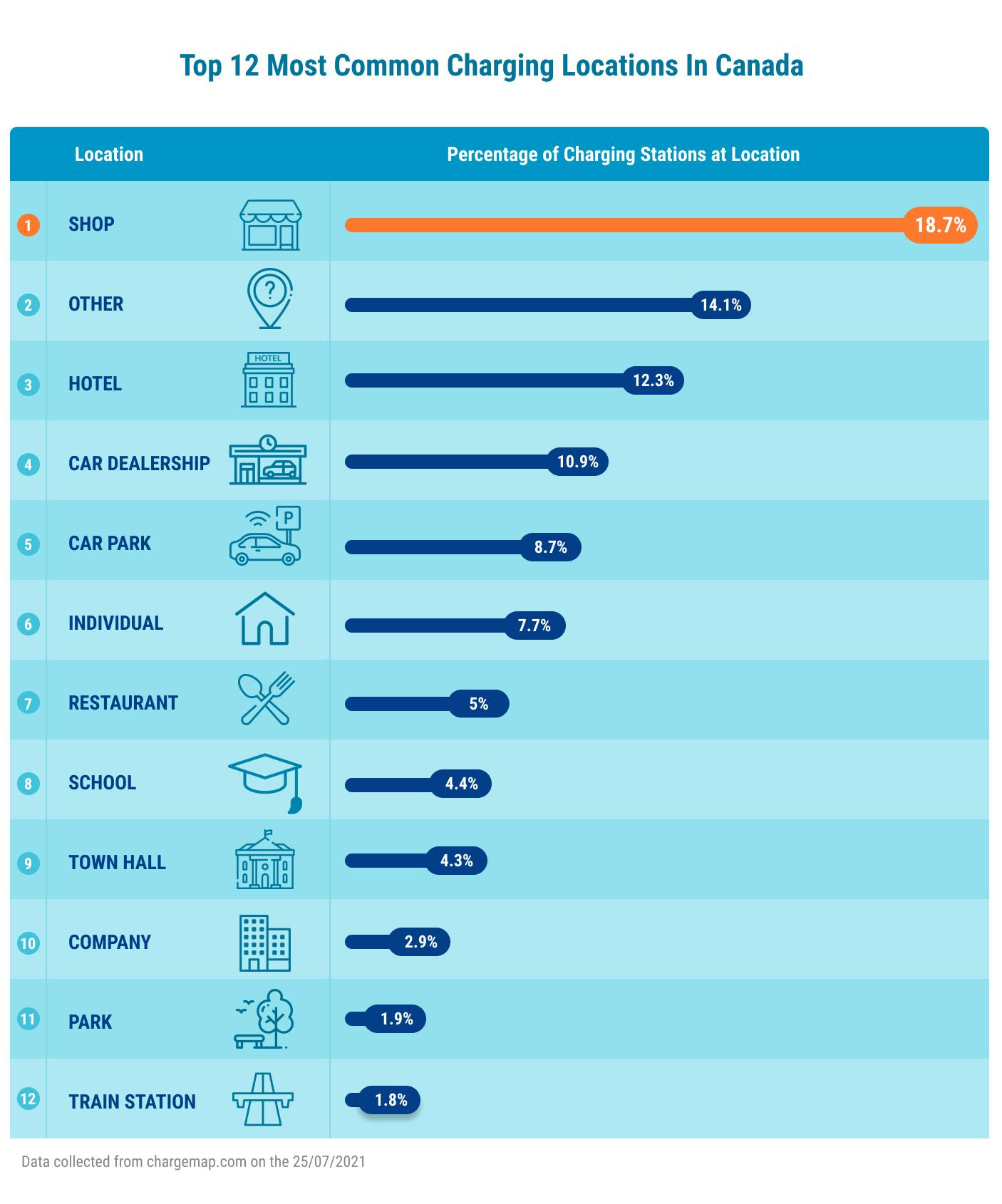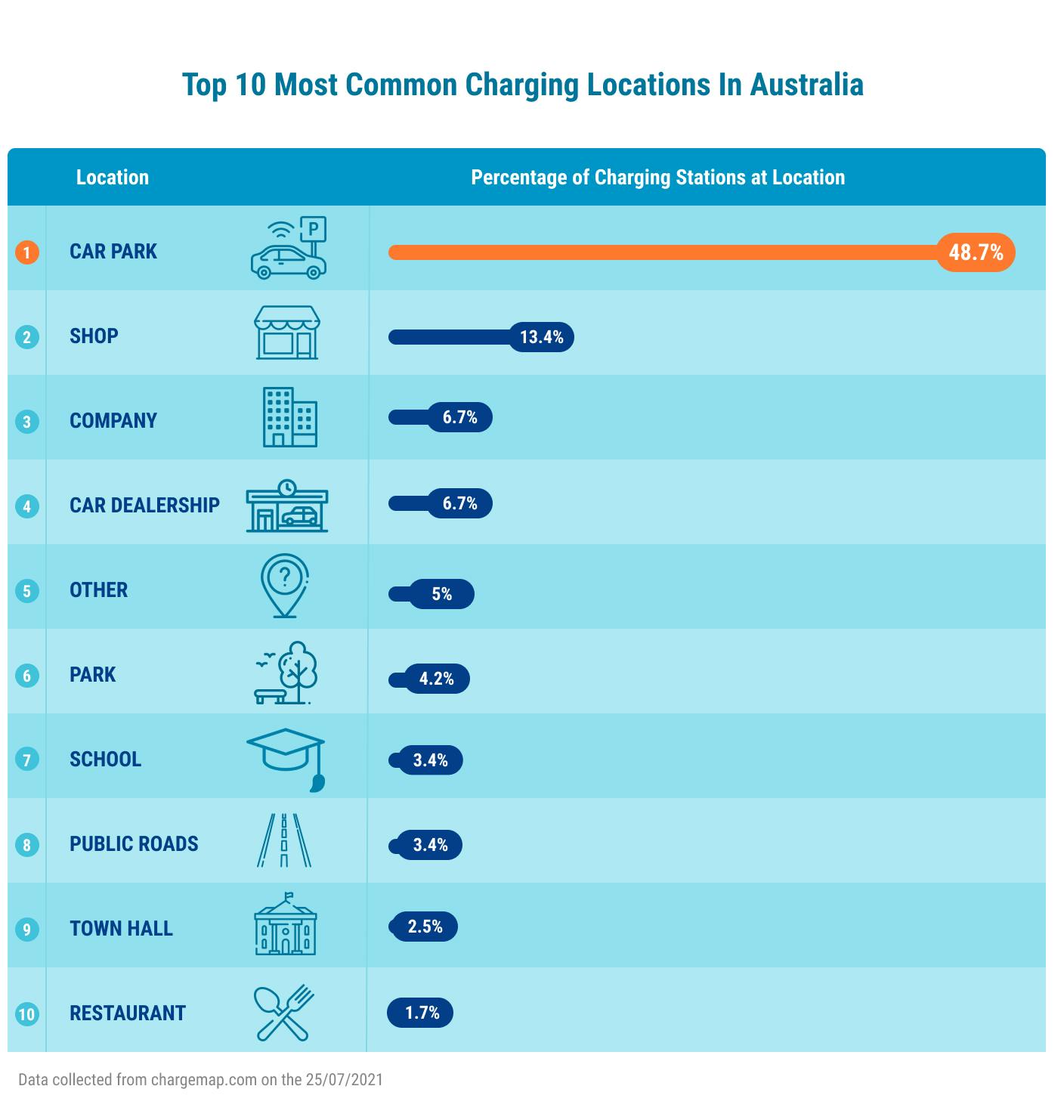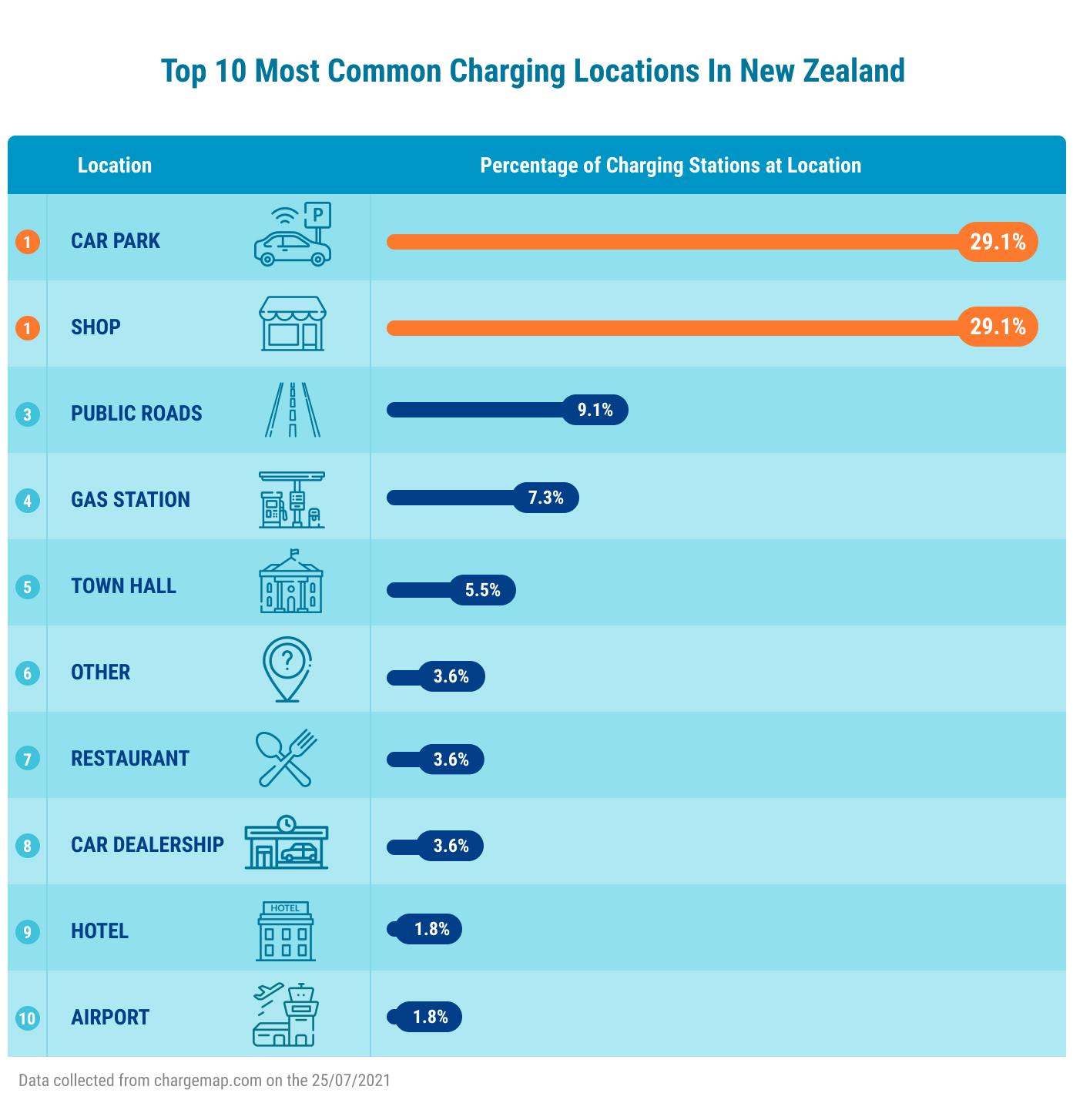Revealed: The Motorway is the least likely place to find a charging station in Europe
Petrol and diesel cars will soon be a thing of the past - whilst we all know it, motorists are still finding it hard to commit to fully electric cars in their drives.
And the time old justification? Range anxiety.
Sure, the charging network has come a long way since EVs first hit the roads. Electric car charging locations are popping up left, right and centre across Europe - but is it enough to sustain the electric vehicle revolution?
At Lease Fetcher, we decided to investigate where these public charging stations were located across the world to see which locations are most or least likely to host an EV charger.
Motorway revealed as least likely place you'll find an EV charging point
Across Europe, only 1.8% of electric charging locations are found on motorways.
This poses a real problem, as long-distance motorway driving already presents perhaps the biggest obstacle for electric cars with limited range.
To avoid the horror of grinding to a halt on the highway, EV drivers have to be more tactical about their routes. Rerouting the sat nav to go off track in search of a charging location in the nearest town centre or the cheapest car park is unfortunately second nature to many EV owners.
As long as the number of charging locations on major highways remains low, motorists may delay their transition to EVs to avoid riding the highway to range anxiety hell.

Charging stations at gas stations could be an EV game changer
Range anxiety is even more apparent when you compare the ease of refuelling for ICE cars and EVs.
ICE and hybrid cars have access to 138,309 gas stations across Europe - but only 2.8% of these locations have electric charging stations.
Adding more charging stations at gas stations would be a fantastic way to prevent “charging deserts”. Gas stations are very accessible in the nations we’ve looked at, easily available for both urban and rural communities. As the data shows, electric car charging stations are more commonly found in urban areas, creating a divide.
As of 2020 in Europe, there were 285,800 public electric car charging stations - these tend to be concentrated in particular areas and to have fewer charge points available per station compared to petrol/diesel pumps.
If a charging station was installed at every gas station across Europe, this would expand the charging infrastructure by almost 50%, providing points where they are most needed and most easily accessible. This would massively contribute to reducing range anxiety.
Car parks are leading the charger expansion in Europe - followed by hotels and shops
Private businesses seem to be plugging the gaps in Europe’s EV charging network.
Most (31.2%) charging locations are found in car parks. These spots are convenient for a variety of EV motorists, from commuters to people hitting the city centre shops. Whilst you normally have to pay to use the charging points at these locations, they offer the convenience of charging your car while you go about your day, without rerouting to find a suitable spot elsewhere.
Hotels and shops are home to 11.6% and 11.1% of all charging locations respectively.
Hotels and shops are inclined to install chargers as a means to drive customers to their businesses - charging at these locations is sometimes free for customers. After narrowly making it across the highway, EV drivers can rest easy knowing that they are able to power up at their destination.
14% of charging locations are on public roads, making urban driving sustainable for shorter range cars. These locations are convenient for quick top ups.
It’s clear that privately installed public charging locations are doing a lot to quell range anxiety fears, though this is primarily to attract business rather than to encourage EV uptake.
Most and least popular charger locations in the UK
When we focus on the UK specifically, we see that there’s a similar distribution of charging locations to Europe as a whole.
30.1% of charging locations are in car parks, while 15.9% are at hotels, 13.9% on public roads, and 10.6% at shops.
Knowing that petrol stations will run their course in the next two decades, BP and Shell have big plans to roll out electric car charging stations at existing petrol stations.
By 2025, Shell will install 5,000 charging stations in the UK. This includes 1-2 charging points at each of its 500 petrol stations in addition to other locations.

Most and least popular charger locations in USA and Canada
In the United States, car parks lead the way again as the most likely location for an EV charger. 39.4% of charging locations are car parks.
Public roads follow with 12.8%, shops with 11% and hotels at 7.9%.
Highways, again, come very low with a pitiful 1.2%.
In Canada, the figures differ quite markedly - the top EV charging location is actually a shop (18.7%), whereas car parks are 5th on the list (8.7%). Hotels appear high on the list (12.3%) and car dealerships are a surprise prominent entry (10.9%) - this figure makes sense if the sales team are trying to push EVs and put buyer’s range anxiety worries to rest. It is interesting this isn’t reflected as strongly in other countries.
Train stations (1.8%) and parks (1.9%) are the least likely charger locations in Canada.


Most and least popular charger locations in Australia and New Zealand
In Australia, yet again car parks storm ahead making up 48.7% of all EV charger locations. This is almost 20% higher than Europe. The second most likely is shops (13.4%).
Restaurants are the least likely location, at 1.7%.
In New Zealand, car parks and shops are equally the most likely to be locations for charging stations, each making up 29.1% of all locations.
Surprisingly, gas stations are high on the list at 7.3%, which is almost 4x as many as in Europe and almost 7x more than USA.
Whilst hotels are investing heavily in EV chargers elsewhere in the world, New Zealand hoteliers aren’t making such strides, making up only 1.8% of locations.


Summary
Governments across the globe are urging and incentivising motorists to make the switch to electric cars as soon as possible. But one major obstacle stands in the way of electrification on a bigger scale: range anxiety.
Range anxiety is not a major concern for motorists who use their cars as a daily runaround in urban areas. Most supermarkets and shopping centres have chargers, and it’s becoming easier and cheaper to install home charger points.
But for longer distance drivers, the uncertainty of journey planning with EVs is difficult to overcome. With so few EV charging stations found on highways, journey times often have to be lengthened and complicated in order to find suitable power sources. Similarly, with so many opportunities to refuel an ICE car, it’s frustrating seeing that so few gas stations offer equivalent charging stations.
Thankfully, private companies that run car parks, hotels, and shops are taking the initiative to draw in more customers by installing chargers. This plugs the gap a little, but more work is required across the globe to really put range anxiety to bed!
Methodology
We gathered figures for charge stations by location type from https://chargemap.com/about/stats. Figures were located for the UK, Europe, USA, Canada, Australia, and New Zealand. You can view the media pack here


